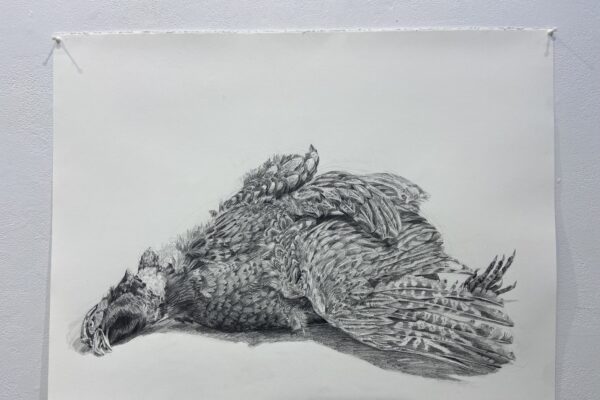Taxidermies (Study) – Julia Hartigan

Taxidermies (Study) – Julia Hartigan
My work relies on observation. Translating what I see into an image allows for me to convey my personal understanding of the world around me. Because of this, I often focus on everyday subjects, highlighting parts of the day and surroundings often overlooked. I encounter instances in which natural elements interact with the artificial on a daily basis. In my work, I look for the places where nature exists in urban environments, as well as where the artificial occurs in natural ones. My work explores the way these two categories are defined by one another, as well as the way in which they are the same.
While considering a still-life project, I was given the opportunity to do a number of studies of taxidermied birds (a heron and pheasant) using graphite and ink. The taxidermies are quite old and worn, and as I worked on these studies I considered the places where the feathers began to fray, and the wires underneath began to show. Taxidermies are an attempt to prevent the biodegradation of a creature that has died, positioning as if it was alive. Over time, though, these birds have still managed to decay in their own way. The feathers begin to disintegrate, the chests collapse, and they can no longer stand. The tension between forces of decay and preservation within these objects led me to consider these birds’ ability to continue to change even as they are held in place.
Julia Hartigan is an Art Studio Major in the Bachelor of Fine Arts degree program at the University of Lethbridge. Working primarily in drawing using a range of media, her work explores mark, texture, and material vocabulary. In 2023, Julia participated in the exhibition, Life After… at the Penny Art Gallery, and in 2024, her large scale drawing, Sea, Sky, and Earth, was purchased as the inaugural work in the Faculty of Fine Arts Dean Office art collection.
Date:April 5th, 2025 - May 30th, 2025
Location:Casa - Platform

